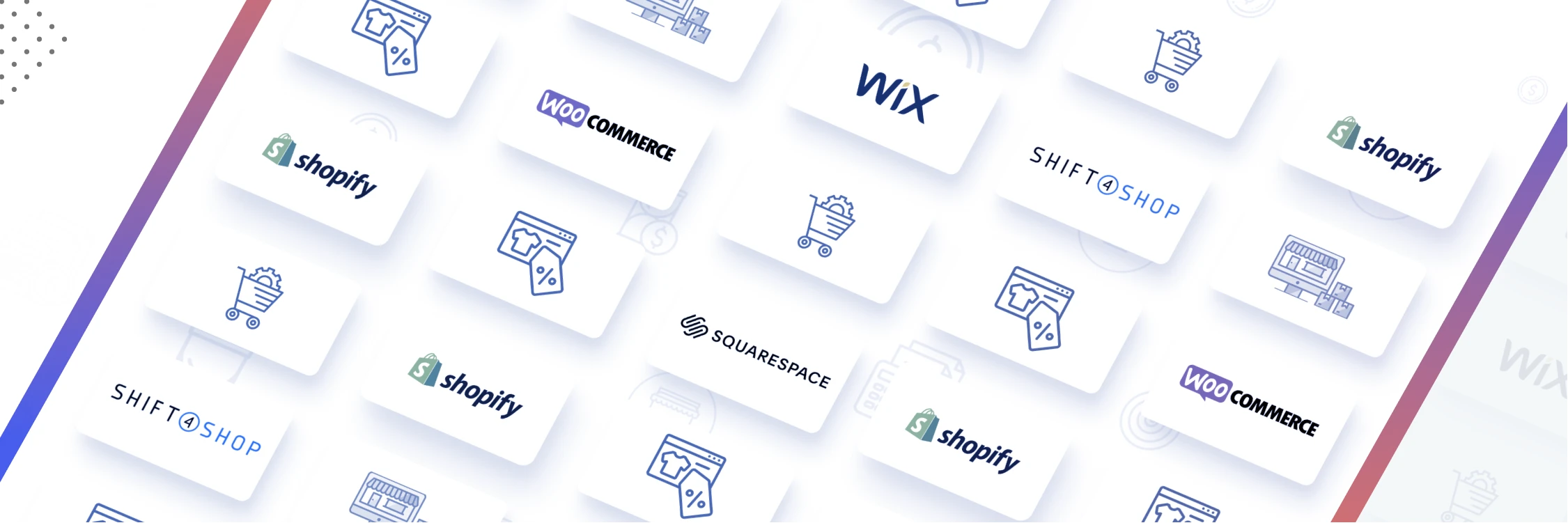
How to Sell Products Online Without Inventory in 2025
Contents
If you're wondering how to sell products online and want to avoid the hassle of physical inventory, you're in luck. All you need is a computer and an internet connection, and you can start selling online in no time.
Global revenue for ecommerce is projected to reach $6.12 trillion by 2027. So there's never been a better time to launch your own store. The benefits of selling products online include its ability to connect you with customers from all over the world, its low barrier of entry for new entrepreneurs, and its potential to earn a substantial income from home.
And you can take advantage of this growing market without managing physical inventory. So let’s explore the different types of ecommerce businesses you can start without inventory, three steps for creating an online store, improving inventory efficiency, and more.
How does selling products without inventory work?
Essentially, selling online without inventory means using services such as dropshipping and print-on-demand. These services work because they allow you to sell products without stocking them in a physical location, like your home, office, or warehouse.
This benefits entrepreneurs because they don't have to worry about purchasing and storing physical inventory. It effectively removes a lot of the risks associated with starting a retail or brick-and-mortar business.
Top 5 Methods to Sell Products Online Without Holding Inventory
Ecommerce business models come in many shapes and sizes. Which one you choose will depend largely on the type of products you want to sell and the amount of time, money, and effort you're willing to put into your business.
Here are five of the most popular ecommerce businesses that you can start without inventory:
- Print-on-demand
- Dropshipping
- Affiliate marketing
- Fulfillment by Amazon (FBA)
- Third-party logistics (3PL)
1. Print-on-demand
Print-on-demand is a great way to start selling online without inventory. The global market for this business model is expected to reach $39.8 billion by 2030.
With print-on-demand, you choose products such as t-shirts or mugs and design prints and logos according to your specifications. From there, you have items produced and shipped directly to your customers.
2. Dropshipping
Dropshipping is a type of ecommerce business model that allows you to sell a variety of products online without having to store them physically. And it's been suggested that dropshipping is a great way to earn financial freedom.
You simply list products on your website and purchase them from a wholesaler once a customer places an order. You then ship items directly to your customer from the wholesaler.
3. Affiliate marketing
Affiliate marketing is a business model where you promote and sell other people's products online in exchange for a commission.
Typically, companies will provide you with a unique link that customers can use to purchase their products. After listing a product with an affiliate link on your website, you earn a commission once a customer makes a purchase.
4. Fulfillment by Amazon (FBA)
Fulfillment by Amazon (FBA) works by sending your products to Amazon's warehouses and having Amazon’s workers fill the orders for you.
Becoming an FBA merchant is a great option for entrepreneurs who don't want to worry about the logistics of managing and shipping inventory. With FBA, you can store your products with Amazon and have them pick, pack, and ship orders for you.
5. Third-party logistics (3PL)
Like Amazon's FBA, third-party logistics (3PL) is a great way to start an ecommerce business without inventory. Even established ecommerce sellers can scale and grow faster with a 3PL partner, says Jake Rheude, VP of Marketing at Red Stag Fulfillment.
“Having effective shipping and fulfillment practices in place to give your end customers the most seamless and pleasant experience possible is a crucial piece of the ecommerce puzzle,” he says.
With 3PL, you can store your products with a third-party logistics provider and have them manage the entire order fulfillment process for you. This type of business is great because it allows you to focus on marketing and customer service while the 3PL provider takes care of the rest.
How to Launch Your Online Store Without Inventory
Once you've decided on the type of products you want to sell, it's time to get your online store up and running. There are a few steps that you need to take when setting up an online store.
1. Choose your ecommerce platform
There are many ecommerce platforms that you can use to start selling products online. Popular platforms include Shopify, BigCommerce, and WooCommerce. Many big brands you know and love already sell on these platforms. Choose one or many and dive into multichannel selling.
2. Set up your website
Once you’ve chosen your ecommerce platform, it's time to set up your website. You'll need to choose a theme, create pages, and add products.
Services such as Squarespace, Wix, and Shopify are popular choices for setting up online stores. And many provide templates that get your products listed quickly while still looking professional.
3. Get paid
The last step is to set up a payment processor to get paid for your products. Popular choices include PayPal and Stripe. Though, marketplaces like Shopify and WooCommerce have built-in payment processors.
The upside to app-native payment processors is you can accept many forms of payment — credit cards, debit cards, and mobile wallets — to reduce cart abandonment rates.
How do I keep track of inventory?
If you're selling online without inventory, you don't have to worry about managing physical products. However, you should keep track of inventory and orders because they won’t be physically accessible to you.
Accurate inventory management in ecommerce is essential for business success. It helps you keep track of your sales, avoid stockouts, and maximize profits.
Services like Fulfillment by Amazon (FBA) allow you to manage orders and shipping. But remember to create your Amazon SKUs correctly. Keep track of all your SKUs in a central location, so you always know what you have in stock.
Can I automate my inventory management?
Yes, you can automate inventory with ecommerce inventory automation software. This software connects your accounting platform to your online store and allows you to track and manage inventory across multiple channels.
Once you match or map products between your accounting platform and store, you can automatically sync prices and stock amounts between them. From there, you can make the most of inventory automation. For example, you can adjust stock levels and generate purchase orders to prevent stockouts.
Depending on your accounting software, you can use shipping automation software to help streamline your ecommerce business. Automatically sending customers tracking updates and order confirmations can help you deliver better customer service and build trust with your customers.
Eliminate busywork and grow non-inventory operations
With rising inflation and a new crop of layoffs announced what feels like daily, ecommerce is a bright light and a booming industry. It's easier than ever to sell products online without your own inventory. As your operation grows, consider expanding into new channels — and the multichannel inventory sync tools available to help you do it.
If you have a QuickBooks Desktop account, Webgility can connect it to your online store for all-in-one 3PL and dropshipping automation. Simplify dropshipping management and easily mark non-inventory items as dropship items in the system. Automation can help eliminate dropship errors from manual data entry and improve vendor relationships.
Plus, you can automate purchase orders for big-box retailers. Instantly create purchase orders, notify vendors, and sync data directly to QuickBooks Desktop. You can even send automated emails to vendors and 3PL providers for shipping orders. Then, import tracking information and automatically communicate shipping details to customers.
Selling online without inventory has never been easier. Webgility can help.
Yash Bodane is a Senior Product & Content Manager at Webgility, combining product execution and content strategy to help ecommerce teams scale with agility and clarity.




.png?width=56&height=56&name=image%20(1).png) Yash Bodane
Yash Bodane


